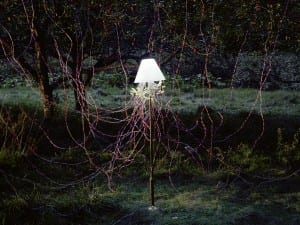The world is fuelled by gold. For centuries, it has been plundered for political influence and used to forge empires from the ground up. Societal status is determined by it, and power is extracted from it. Today, it is embedded in our mobile phones, allows humans to reach space and furthers medical innovation. Photographed across four years and four continents, The Canary & The Hammer, the new publication from photojournalist Lisa Barnard, shows how our dependence on this precious metal was born, and how it still remains the most valuable commodity today.
“The original idea was formed from the 2008 financial crisis,” tells Barnard over the phone from her home. The crash was a near-perfect example of the capitalist obsession with hoarding obscene amounts of wealth, with the poorest in society largely footing the consequences. This acted as Barnard’s starting point. “During the research phase I started looking more deeply into ideas around gold,” she recalls. “I found this really interesting paper written by (British economist) John Maynard Keynes. He spoke about the emergence of capitalism as an economic framework, and how that was due to the rise in profit after the Conquistadors plundered South America, bringing precious metals from the new world into the old.”
The historical significance of this location led her to the village of Santa Filomena, Peru. “This village didn’t exist before it became a mine,” she says. Settled in the 1980s by miners working in abandoned sites, at the time child labour was rife in the area and people lacked basic facilities, such as schools or health services. Today, it operates as one of the few Fair Trade mines.
“Everything at Santa Filomena facilitates the production of gold and everything is connected to gold. It has its own capitalist framework, but it’s very pure, and is based on the original concept of what this political system was,” tells Barnard. Specifically, she was drawn to the stories of women working in the mines. “At Santa Filomena, the difference is that the fair trade companies act as an umbrella and give the women workers greater rights. That said, they are still at the bottom of the pile.”
After Peru, Barnard travelled to Jamestown, Virginia, the former colonial settlement famously associated with Pocahontas. Here, she experienced how gold’s allure manifested itself across different locations. In her images, modern day merchants scour river beds in Virginia, and youngsters have teeth grills fitted emblazoned with the American flag. In Hong Kong, she discovered the “best example of how capitalism works.” Here, it’s gifted at christenings, weddings, birthdays and most celebrations, becoming a part of how people value themselves in society. But it’s a cycle, as Bernard explains. “Electronic waste is transported to Hong Kong, the illegal workers make gold from it and then people buy it as gifts.”
Bernard was also influenced by photographer, writer and economic theorist Allan Sekula. “For me, I reference the beauty of gold but the realism of photojournalism, and that seemed emblematic in the hardships of the worker,” she recalls. “I positioned myself within these two elements and the connections between photography and gold. It enabled me to look at both ends of the spectrum.”
The Canary & The Hammer also examines how this metal has made breakthroughs. “Within biology and new innovations in cancer treatments, gold possesses specific qualities that make it completely unique. Its value is important to all sorts of invisible systems that we use on a daily basis,” she explains. But in 2019, as data becomes an ever-more invaluable commodity and bitcoin changes the way we make transactions, is this valuable metal losing its appeal? No, says Barnard. “What gold has over anything else, is that it retains value. There’s only a finite amount of it, and this is something data does not have,” she says. “If anything, with the destruction of the earth through global warming, I think that gold will become more valuable.”
Barnard’s past monographs, such as 2015’s Hyenas of the Battlefield, Machines in the Garden, told very specific stories of human perseverance against dystopia. Gold, and our relationship with it, is an open-ended story, however. It’s not defined by time, instead it’s a material that inspires “new, endless narratives,” Barnard believes.
The Canary & The Hammer is available from September. Find out more here.
Lead image courtesy of: Lisa Barnard, from The Canary and The Hammer, MACK, 2019.





